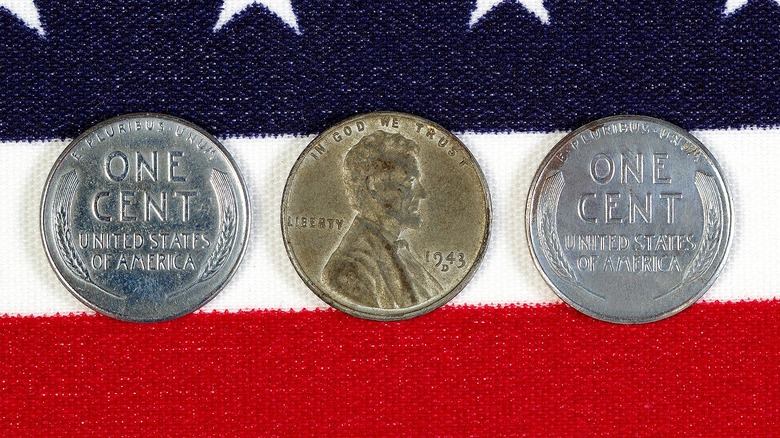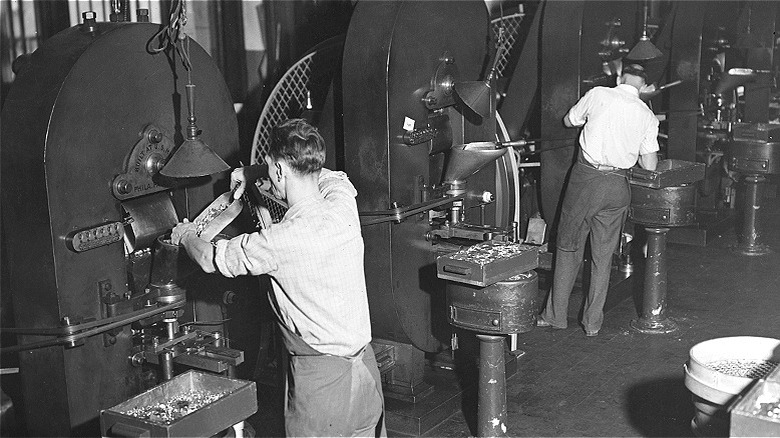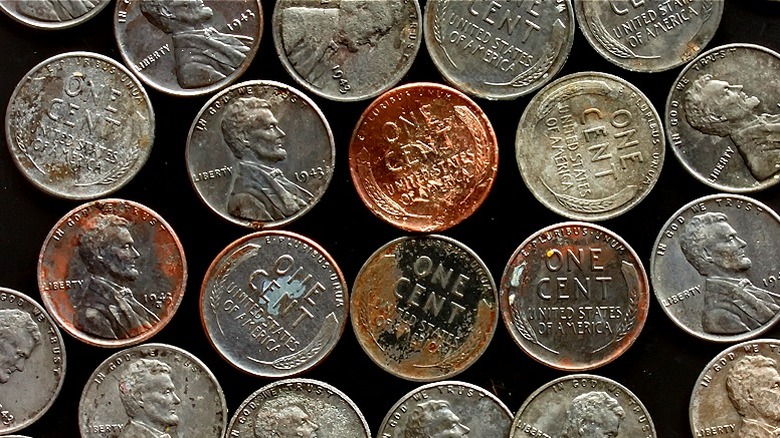Why This Special Penny From 1943 Is Worth A Ton Of Money
It's a well-known fact that the humble penny costs more to make than it's worth. And quite a bit more, as it turns out. Because of inflation in metal prices, the U.S. Mint disclosed in 2022 that each one-cent coin cost 2.72 cents to manufacture. However, if you happen to own one of a few dozen special pennies made in 1943, you could be sitting on a treasure that's worth enough to buy a house.
Regular pennies from 1943 are worth about 30-40 cents each, which still isn't a bad return against their one-cent face value. Although most folks typically associate older pennies with a copper-alloy construction, many pennies from the World War II-era, including most 1943 pennies, were actually made from steel. That's because the country's military needed traditional coin-making metals like copper and nickel for producing war materials instead.
Besides the semi-precious metals in coins, Americans were also asked to conserve food, gasoline, and rubber items like car tires. Indeed, entire cars themselves ceased to be produced for several years due to war rationing. Still, about 40 pennies from 1943 were struck using their typical copper-alloy composition instead of steel. Some experts theorize that these copper blanks were left in the pressing machine when the U.S. Mint switched over to steel and were cast in the old material by accident.
Its considerable value may be declining
With our history lesson concluded, let's take a look at how much a rare 1943 copper penny could be worth today if you're lucky enough to find one. In 2019, an example with a great backstory sold for $204,000 at Heritage Auctions. As the story goes, the seller, Don Lutes, owned the rare specimen for more than 70 years prior to the 2019 sale. Indeed, as a lucky youngster in 1947, Lutes found it in his high school's cafeteria.
While more than $200,000 is an impressive amount, the highest sale ever recorded for a 1943 copper penny was $1.7 million in 2010 (via CNBC). However, this purchase proved to be a poor investment for its new owner, as explained by CoinWeek. Per the outlet, in 2021, the very same coin sold at Heritage Auctions for $840,000. In other words, the collectible penny shed half its value over the course of a decade. Still, we're betting that few readers would complain about receiving "only" 800 grand for a one-cent coin.
Be wary of fake 1943 copper pennies
Although ~40 of these 1943 pennies were mistakenly struck from a copper planchet, experts estimate that fewer than 20 exist today. That's compared to more than 1 billion of the resource- saving steel 1943 pennies produced. Although steel obviously became the wartime material of choice for the pennies, other alternatives were considered, including glass. Because of the outsized value of the copper WWII-era coins, the U.S. Mint says counterfeit copies are rampant. One counterfeiting technique involves changing the date on later copper pennies. For example, the year 1948 could be modified by a pro forger to look like 1943.
Another attempt at penny fakery exists when genuine 1943 steel pennies are coated (plated) with copper to mimic their rarified counterparts. The good news is that these fakes are easy to detect with nothing other than a simple magnet. That's because steel is highly magnetic and will stick to the magnet whereas copper won't. While the odds of finding one of the 10 to 20 remaining copper 1943 pennies in your vacation fund change jar are admittedly low, take solace. There are still some more common coins that are still worth some serious cash — and you just might have one lying around.


